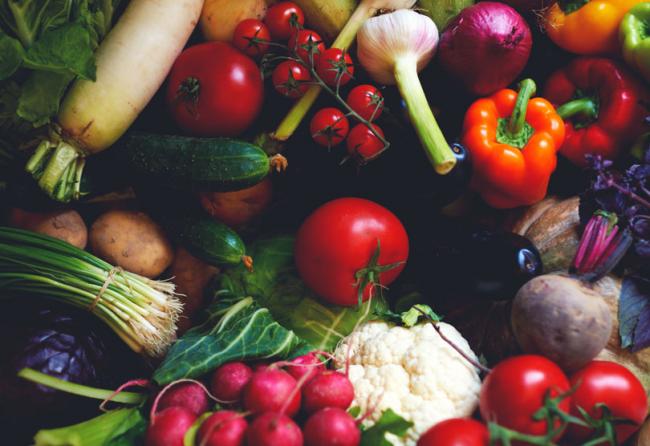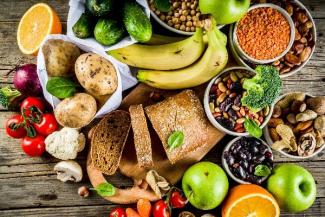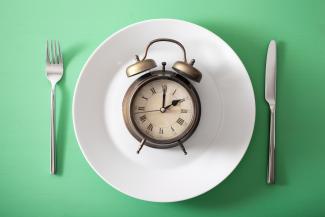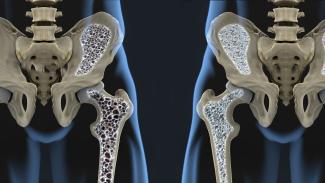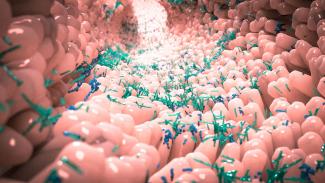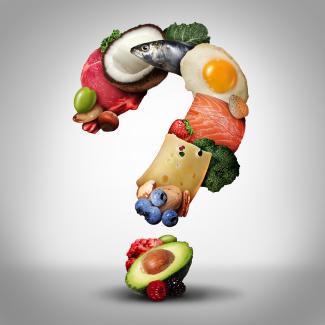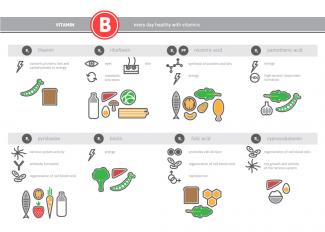Are You Eating Enough Veggies
Are you tired of being told what you once thought was healthy is now bad for you? It’s frustrating to go from one extreme diet to another, and constantly be worried about what you should and shouldn’t be eating. Have you ever noticed that there is only one constant to any fad diet, weight loss plan, or nutrition regiment? Vegetables. And lots of them.
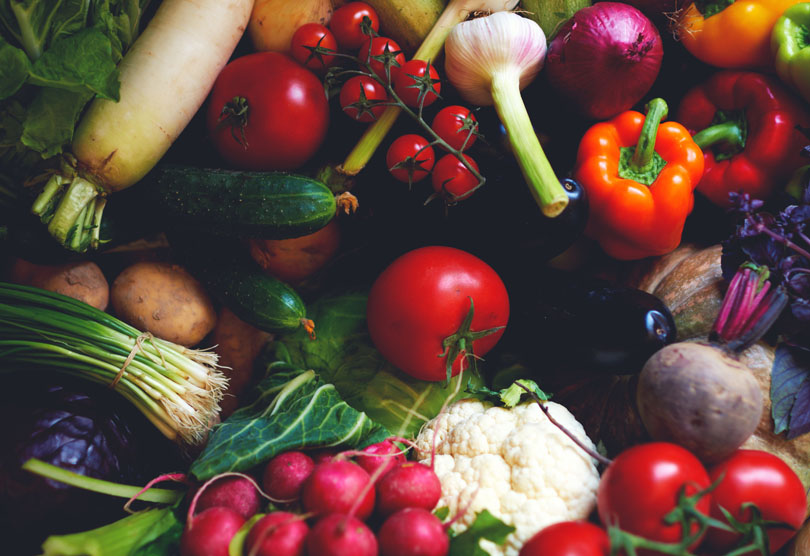
Most diets focus on the minutia, like:
- When to eat carbs
- How to couple food groups
- Portions control
- Calorie timing
- What foods to avoid
- How to make substitutions for your favourite meals
But what’s missing in these dietary tactics is the emphasis of eating veggies.
The New Food Pyramid
- Vegetables (unlimited, especially leafy greens and nonroot veg)
- Pure water (8 glasses)
- Complex carbohydrates (6 servings or less)
- Lean protein (3–5 servings)
- Fruit (3–5 servings)
- Healthy fats (2–4 servings)
- Artificial additives (minimal)
Your daily diet should look something closer to the above new food pyramid, with the most important emphasis on vegetables. To clarify, unlimited amounts of leafy greens and colourful vegetables, with 1–3 portions of root vegetables.
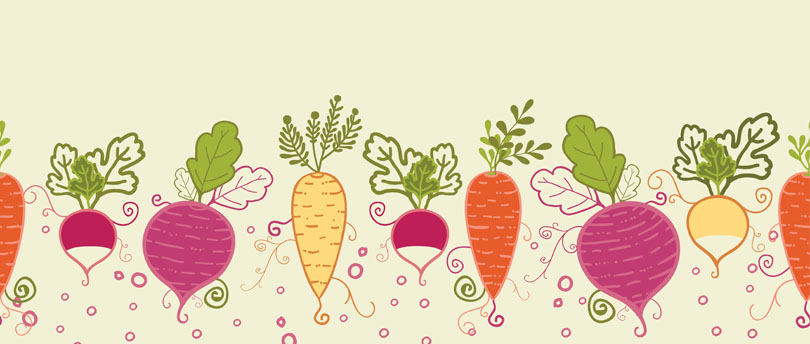
Why Limit Root Vegetables?
Root vegetables are packed with important nutrition, but also starches. Your body uses starches for energy, just like carbohydrates from bread and sugars from fruit. Starches, carbohydrates, and sugars are crucial for the body to create energy, but when eaten in high amounts over a short period of time, they can lead to sugar spikes in your blood, followed by a state of hypoglycemia and inflammation. This may be why you feel sleepy after a big meal of pasta, or have brain fog after the sugar high of your afternoon donut. Heavy starch vegetables include anything grown underground— carrots, potatoes, sweet potatoes, yams, radish, turnip, and taro—, but also corn, pumpkin, and squash.
But it’s important to keep the big picture in mind.
If you have the choice between a Krispy Kreme donut or a bag of baked root vegetable chips, the choice should be obvious. Don’t drive yourself crazy with the minutia. Make educated and wise food choices, and if you are to indulge in a non-nutritious food, make sure you enjoy it and save yourself the guilt trip. Sticking to the general 80:20 rule of thumb may be the easiest plan you can have. Remember that the most successful diet is the one you can actually stick to.
The 80:20 rule is simple (but not always easy): Eighty percent of the time plan for nutritious meals and eat mindfully. The other 20% of the time, enjoy your favourite foods with pleasure. A majority of the healthy 80% should be vegetables.
Why Vegetables?
Vegetables are the best diet food and preventative medicine for any condition. Best of all, they are affordable and accessible. They are high in vitamins, minerals, and fibre, while low in calories. Many have valuable antioxidant, anti-inflammatory, and immune-supportive properties to combat predisposing factors of cancer, heart disease, immune dysfunction, and neurodegenerative conditions.
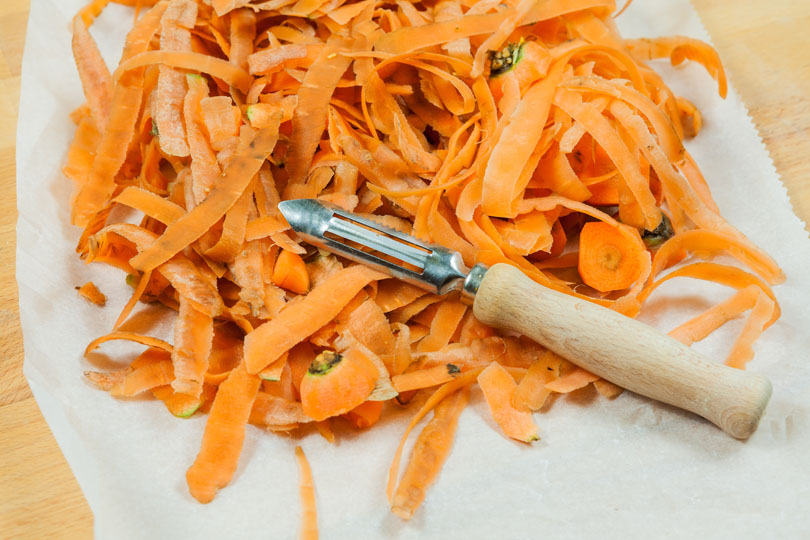
Raw, With the Peel
The most nutritious way to eat your veggies is raw, with the peel on. This form allows the greatest amount of nutrients and fibre to be absorbed; however, some people may have difficulty digesting raw vegetables, and so steamed or stewed would be the next best option. There is another group of people who are hypersensitive to certain foods (including vegetables) or have conditions that are worsened by specific types of foods; for example, interstitial cystitis (IC or hyperactive bladder condition) is worse with acidic foods such as tomatoes. Speak with your naturopathic doctor if you think specific food groups might affect you. Many vegetables are also superfoods and supergreens because they are highly nutrient-dense foods.
Superfoods vs Supergreens
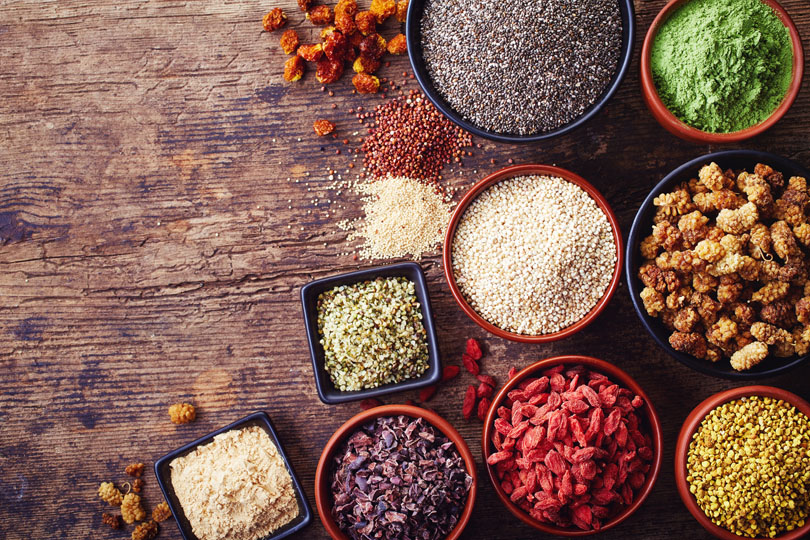
Superfoods are natural foods that contain especially high nutrient content per serving. They are jam-packed with disease-fighting power, and most include vegetables and fruits. These are the foods to focus on when planning your meals for yourself and your family. The top superfoods and their nutritional content include:
- Sprouted wheat grass: High amounts of chlorophyll (70%) increases oxygen-blood-iron circulation to supports thyroid, digestive, and blood glucose regulation.
- Broccoli and broccoli sprouts: Rich in amino acids, vitamin K, and anticancer properties.
- Spinach: A potent source of vitamins and minerals, especially iron and manganese.
- Kale: This high-fibre and slightly bitter leafy green is packed with vitamins, minerals, and calcium as an effective antioxidant.
- Seaweed (wakame, nori, dulse, kelp): An alkalyzing antioxidant with a strong ability to chelate and purify the blood, not to mention a high source of iodine.
- Blueberries: Strong antioxidant, anti-inflammatory, and high in vitamin C.
- Salmon and omega‑3 fish oils: The high EPA levels in omega-3 fish oils are an ideal anti-inflammatory as well as cognitive and cardiovascular support.
- Tea (green or black): Strong antioxidant, anti-inflammatory, antimicrobial, antidiabetic, and support for metabolic and neurological activities. Do you know the difference between different caffeine products?
- Goji berries: Very high in vitamin C with antioxidant properties.
- Raw cacao: Strong antioxidant high in magnesium and nonheme iron.
- Turmeric: Potent anti-inflammatory and antimicrobial agent used in many countries as a heart-protective spice and natural food preservative.
- Coconut (young): Coconut water, milk, and the oils are all so nutritious. Coconut water is a potent electrolyte replacement, and the medium chain fatty acids are healthy to cook with for cognitive support or as a natural lubricant, antimicrobial, and sunscreen.
- Dark chocolate (>70%): Cocoa is a strong antioxidant and can lower blood pressure.
- Unpasteurized honey and propolis: High in protein and as a natural antimicrobial to be used externally and internally (except with infants and pregnant women).
As you can see, a number of these superfoods are vegetables, due to their highly nutritious content. Now, let’s take a look at nutrient-dense greens… Supergreens are commonly powdered forms of condensed vegetables or algae. I love using them as a supplemental boost to my diet. It’s especially useful for my busy mornings, when I may not be able to make a well-balanced meal and can prepare a healthy morning shake with my supergreens. I alternate my sources of greens after each container to ensure I’m getting a variety of nutrition. My favourite sources are:
- Chlorella: Fresh-water algae with a complete protein profile, with immune and cardiovascular-supporting properties.
- Spirulina: A cultivated microalgae with high levels of protein and antidiabetic properties.
- Sprouted wheat grass: High amounts of chlorophyll (70%) increase oxygen-blood-iron circulation to supports thyroid, digestive, and blood-glucose regulation.
- Barley grass: High in calcium, nonheme iron, and vitamin C.
- Wild blue‑green algae: A phytoplankton high in protein with immune-supporting functions.
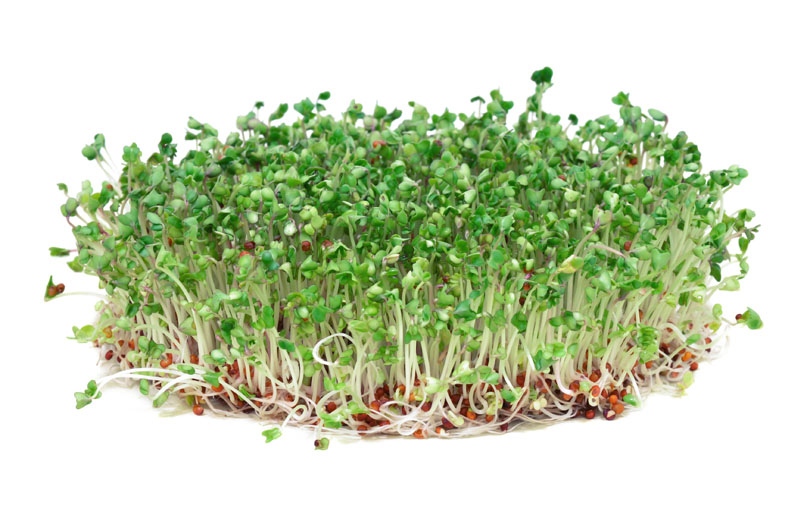
What Are Sprouts?
Sprouts are also a good food source, because of how jam-packed they are with nutrition. Sprouts are germinating seeds that eventually grow into plants, legumes, seeds, grains, and vegetables. This means that the nutrients of the plant are concentrated into the germinating seed. The most nutritious sprouts include:
- Chorophyll‑rich: Wheat grass, sunflower, buckwheat lettuce, snow pea shoots.
- Small vegetable seeds: Alfalfa, clover, arugula, broccoli, kale, cabbage, fenugreek.
- Grains and seeds: Amaranth, quinoa, millet, buckwheat, rye, spelt, teff.
- Legumes: Lentils, white beans, red beans, pinto beans, chickpeas, mung beans, adzuki beans.
To get the most nutrition out of your sprouts, make sure the seedling is germinating, and eat them raw. However, be careful of the quality of sprouts, since some can carry harmful bacteria, such as Salmonella and E. coli. Always purchase your sprouts from reputable sources, keep refrigerated, and eat within a few days.
What’s Missing?
A varied vegetable-based diet is not enough to sustain an optimal body, however; it is missing lean proteins and healthy fats. Especially if you are a vegetarian or vegan, getting enough amino acids from protein‑based foods is vital for tissue regeneration (muscle, tendon, ligaments, etc.), mental health, antioxidation, and immune support. Foods that are an excellent protein source include:
- Lean meat (chicken, turkey)
- Fish
- Eggs
- Beans, lentils, legumes
- Nuts (almonds, walnuts, pecan, soy, etc.)
- Seeds (hemp, flax, etc.)
- Algae (blue-green, spirulina, chlorella)
The protein sources mentioned above lack one thing that is important to the body: iron. Heme iron sources are found in red meat and are required by the body to produce blood and carry oxygen. Many dark leafy vegetables contain nonheme iron, but they are not utilized by the body as readily. If you consume little or no red meat, make sure you practice the following:
- Check your iron levels to see if supplementation is necessary
- Eat your iron sources or supplements with vitamin C
- Have black strapped molasses
- Take ferrum phosphate (6×) tissue salts with your iron
- Check your B12 levels concurrently, since many iron-deficient patients are B12-deficient as well. Both cases result in an anemic state of fatigue, lethargy, and low blood pressure.
Healthy fats can also be found in the list of protein-based foods above; however, some of the best sources are found in vegetables and fruits, such as avocados, coconut, and olives. Healthy fats are very important for mental development and anti-inflammatory properties that help prevent many degenerative diseases.
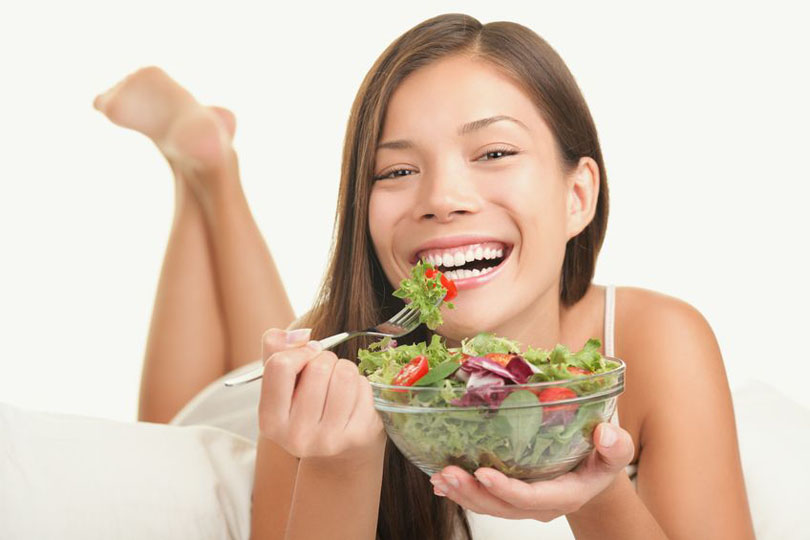
How Do I Get Enough Veggies?
To ensure you are getting 8–12+ servings of veggies per day takes a lot of conscious effort and choices. The best way to keep your nutritional intake high and with variety is to form the following healthy habits:
- Start your morning with a supergreen shake = 2–3 servings
- Have at least 2 servings of veggies with lunch and dinner = 4 servings
- Have at least 1 vegetable snack a day = 1 serving
- Dried seaweed snacks
- Raw carrots, celery, cucumber, broccoli, cauliflower, etc.
- Guacamole and veggies
- Vegetable juice or wheatgrass shot
- Have at least 1 superfood or veggie green per day = 1 serving
- Precut veggies on a Sunday and keep them in easy-to-access baggies or Tupperware to grab and go.
- Try 1 new leafy green or colourful vegetable a week
- Keep it interesting and don’t always have salads. My favourite is peanut rice wraps. Try the recipe below and let me know your favourite vegetable combinations…
Peanut Rice Wraps
These are one of my favourite meals to make at home. Feel free to eliminate the rice paper and have lettuce/green wraps instead with the same ingredients. You can also easily substitute ingredients for whatever you have in your fridge, or what is in season for the area where you live in.
- Rice‑paper wraps (you can find these in many Asian and English grocery stores)
- Vermicelli noodles—1 small handful per person
- Dark leafy green (i.e. lettuce, steamed kale or spinach)—4–8 servings per person
- Sliced veggies (i.e. carrot, cucumber, avocado, celery, broccoli, tomato, cilantro)—2 large handfuls (2 servings) per person
- 1 mango
- Protein source (i.e. shrimp, beef, chicken, salmon)—single palm-sized portion per person
- Peanut sauce—4 tbsp. of natural peanut butter, splash of soya and hot sauce to taste
Directions
- Boil some water and submerge the vermicelli noodles in. Take off heat and let sit for 5 minutes or until soft. Strain and place in a serving dish.
- Cut your protein source into thin slices and fry on low heat with a little olive oil.
- Cut your vegetables and mango into thin slices approximately 3–4 inches long, depending on the size of your rice-paper wrap.
- Soak your dark leafy green in a produce wash for 10 minutes, and cut into palm-sized portions.
- Make your peanut sauce by heating the natural peanut butter in a saucepan until it softens. Continue stirring. Add in your preferred amount of soya and hot sauce to taste and mix. Take off heat and place in a shallow dish or small bowl.
- I like to prepare my rice wraps one at a time as I eat to avoid the rice papers from sticking together. In this case, I bring over a shallow dish to the dinner table and add in some boiling water. Place a single rice-paper sheet in the water for 10–30 seconds. The hotter the water, the less time is required to let soak.
- Enjoy your wraps. Start with your rice paper, then add your lettuce, veggies, mango, protein, and sauce. The rice paper is fragile, so make sure you don’t fill it too much!


